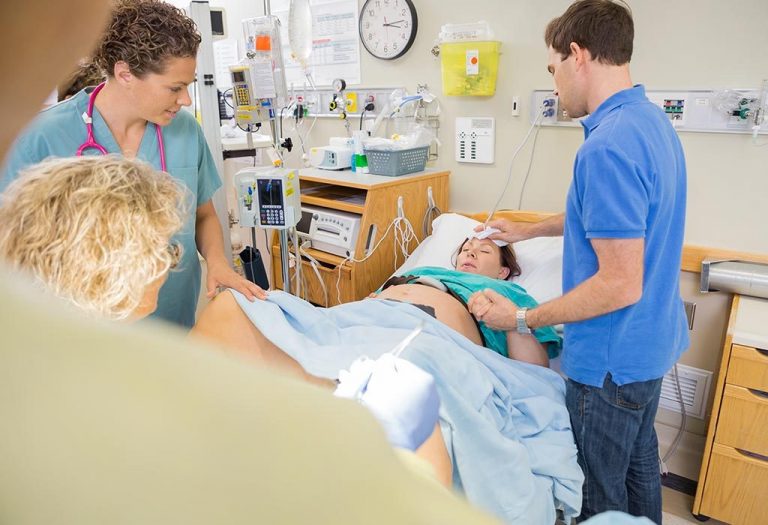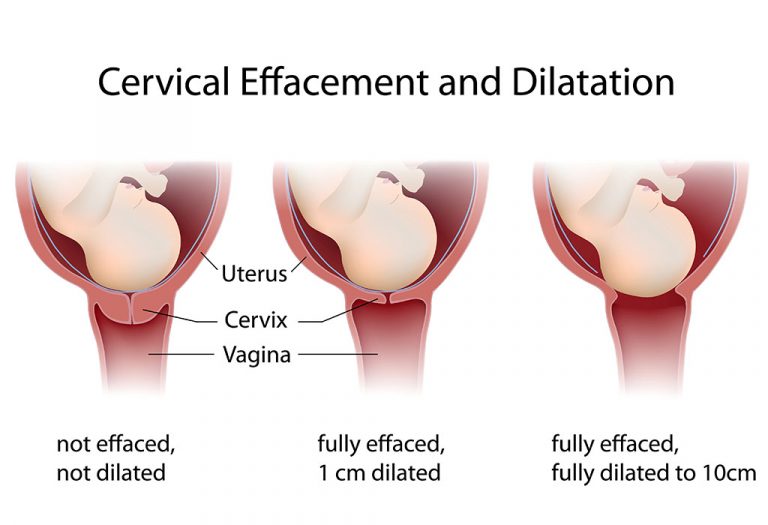Giving Birth Alone at Home: Check These 7 Useful Tips

All pregnant ladies are seen to be brimming with excitement as they approach their date of delivery. Sometimes, they also feel worried if they will go into labour when they are all by themselves and reaching a hospital is difficult. What if you are in a situation where you end up with an unplanned home birth or if you have to give birth alone at home? You must not feel perturbed; instead, stay calm and remember some simple instructions to go through the emergency delivery safely. Some women consider the birth of a child as an intimate bonding time and opt to give birth completely alone. Nevertheless, preparing yourself for the unforeseen situation is always better to ensure the safety of your newborn and yourself.
Simple Tips for an Emergency Delivery By Yourself at Home
A lady who gives a normal birth without any complications does not need any external help as such. It is just useful to have someone around to help in case of complications or for encouragement and support. In the case of an uncomplicated birth, the mother’s body does all the work, most of it being instinctive anyway.
Many unattended and unassisted births happen, which is evidence that women can give birth in the absence of medical professionals. Many risks are involved, so you must remember that just because you can does not mean you should. Giving birth alone in a bathroom is an empowering experience, but not without the risk involved in it. Giving birth alone in bed is also not uncommon, provided the mother handles the situation very well. Here are a few simple tips for an emergency delivery.
1. Understand the Situation
You first have to gauge that the baby is ready to be delivered and you will not be able to make it to any hospital. Assess whether the contractions are frequent, strong and long; an indication of imminent delivery. The first baby takes longer than the subsequent ones and so, be mentally ready for the onslaught.
2. Call an Ambulance
In all the excitement of the arrival of the baby, do remember the most important things. The number for emergency ambulance services in India is 102 and in the US, it is 911. You must get an ambulance to reach you quickly and call your obstetrician. Your doctor may be able to help you by talking you through the basic steps of emergency delivery or home birth, so put her on speakerphone. You must not forget to keep the door unlocked so that the medical personnel from the emergency ambulance service can enter your house and help you.
3. Know It is Natural and Stay Calm
There is no doubt that an unplanned delivery seems very frightening, but you need to stay calm and believe that your body knows how to deal with it. Do not panic or worry that the baby might get stuck or come out feet first. Keep in mind that babies who are positioned in the ideal head-down position arrive quickly and do not encounter any problems. Home births are more common and safer for low-risk mothers than hospital births. Women who opt for home birth suffer very few unnecessary medical interventions.
4. Keep Yourself Clean and Comfortable
Ensure proper cleanliness by washing your hands and the vaginal area. Try to keep a bucket of warm water and at least four clean towels to wipe and keep the baby warm and covered. To avoid a messy cleanup, you might feel like lying in the tub, but you will neither be comfortable nor easily accessible to the emergency team. You must rather lay towels, clean sheets, shower curtains or rugs on the floor. If you need to lie down while you are alone, you must use a bunch of pillows to prop yourself up. You must choose a position you are most comfortable in, whether squatting or being on all fours.
5. Withhold the Urge to Push Until You Can’t
When you are in a situation where the baby is arriving unexpectedly, it is advisable not to bear down as your delicate tissues might get damaged. Panting helps in adding to the internal pressure and keeps you from holding your breath. Try to ease the baby out by just gently pushing. Once the baby’s head is visible, you must gently press your hands against your perineum. Just help the baby gently glide out gradually. Hook a finger under the umbilical cord and loosen it slowly if it is around your baby’s neck. Once the head is out, the shoulders and then the rest of the body should easily come out.
6. What Next, When the Baby Is Out
As soon as the little one is delivered, you must towel him off and provide skin-to-skin contact by bringing the baby up to the belly or the chest. This is done to keep the baby warm and calm. Then, run your fingers from the corner of the eyes to the baby’s nostrils to drain off the amniotic fluid and stimulate the first breath (1). Then, you need to rub the sides of the back of the rib cage up and down vigorously until the baby begins breathing. Most of the babies these days start breathing on their own without the aid of any external stimulation or intervention. If your baby needs any help at all, then give two quick and extremely gentle puffs of air into the baby’s mouth and nose. The next step is to guide the baby’s mouth to the nipple to initiate breastfeeding. This helps the new mum to release oxytocin, a hormone which helps to contract the uterus further. Thus, the placenta is expelled out of the body.
7. Don’t Tie or Cut the Umbilical Cord
The new mom should be very careful about the umbilical cord. Cutting it in a sterile fashion may not be very easy, and it may expose the baby to some infection. Moreover, at the time of birth, if the baby does not begin breathing on his own, this can prove lifesaving as thirty per cent of the baby’s blood is still in the placenta, which can provide oxygen for two to five minutes. So, the cord should remain attached, and the placenta should be wrapped in a clean towel for some time until the EMT arrives. They can cut the cord in a sterile fashion.
What to Do After Giving Birth by Yourself at Home?
Once you have birthed your baby, the first and foremost thing is skin-to-skin contact with your baby to provide them solace and warmth of your body because the temperature of the womb and the outside world is totally different. Cover your newborn baby and yourself with a clean and dry blanket. Here are three more things you need to do:
1. Make sure your newborn is breathing properly
If your infant is not breathing right after the birth, gently rub their back and move on to rubbing their chest. You can gently tap on their feet as well. If they still do not breathe or show very weak signs of breathing, give mouth-to-mouth resuscitation to your newborn without any delay.
2. Keep your baby close to you and breastfeed
After learning your baby is fine and breathing, you need to breastfeed them as soon as possible. If your placenta is not delivered, don’t worry; you can breastfeed. In fact, breastfeeding will only release oxytocin that will stimulate contractions, in turn, helping your deliver the placenta.
3. Get ready to deliver the placenta after the birth
Sometimes, the placenta delivers on its own, and other times, it does not. When the placenta is ready to separate, you will feel mild pressure in the pelvic area and some contractions. Do not tug at the umbilical cord attached to the placenta to pull it out. Wait for the medical help to arrive to safely deliver the placenta.
FAQs
1. How common is it to give birth at home unplanned?
According to the American College of Obstetricians and Gynecologists, around 35,000 home births occur annually in the United States, with 8,750 of these being unexpected (2). While it’s rare to give birth unexpectedly at home or in a car, it can happen, especially if it’s your first baby. If you haven’t had any labour symptoms or only occasional contractions and suddenly feel a strong urge to push, your baby might be on the way.
2. What are the odds of precipitous labour for the second time?
If you’ve experienced a precipitous labour before, it’s crucial to recognise the signs early. Be ready to head to the hospital or birth centre quickly, as subsequent labours can be even faster.
3. What should you keep in an emergency baby birth kit at home?
Putting together a birth kit if you live in an area prone to natural disasters or where the nearest hospital is far away can come in handy. Harvard Health Publishing and Journal of Midwifery and Women’s Health suggest keeping the following items in the kit: clear sheets and towels, a plastic sheet, a flashlight, a plastic bag for the placenta, sanitary pads, sterile gloves, a clean pair of scissors, diapers, clean water, disinfectant or sanitiser, a soft towel/blanket for the baby, trash bags, and a thick string, rope, or shoelace to tie off the umbilical cord (3) (4). Remember to keep your doctor’s contact information in the house as well as with your close friends or family who can reach out to you in case of an emergency, as well as neonatal resuscitation instructions (5). One more thing, don’t forget to note the time of the birth and congratulate the mom!
4. Is home birth safe for the baby?
People who choose to have planned home births with all the precautions in place deliver without complications. However, there are cases where, with even every preparation, the likelihood of seizures, risk of infant death, and nervous system disorders linger (6). Therefore, it is ideal to keep yourself prepared and consult your doctor regarding the pros and cons of planned and unplanned home births, as well as being pregnant and giving birth at home alone.
There is a growing trend of free birth of babies in which women feel that they can handle the situation as they are aware of the procedure of childbirth and the risks associated with it. Such rapid births happen without the presence of a midwife, though sometimes, paramedics arrive at the right time. New mothers should definitely make adequate preparations for the baby’s safe landing. If you don’t make it to the delivery room, your fears will be minimised if you know in advance what to do. Whenever you are in a state of doubt, always know that your body and the baby know much more than what you think.
References/Resources:
1. Emergency delivery: What to do when the baby’s coming – right now; UT Southwestern Medical Center; https://utswmed.org/medblog/go-into-labor-home/
2. Planned Home Birth; The American College of Obstetricians and Gynecologists; https://www.acog.org/clinical/clinical-guidance/committee-opinion/articles/2017/04/planned-home-birth; April 2017
3. Emergencies and First Aid – Childbirth; Harvard Health Publishing; https://www.health.harvard.edu/staying-healthy/emergencies-and-first-aid-childbirth
4. Emergency Preparedness for Childbirth; Journal of Midwifery and Women’s Health; https://www.midwife.org/ACNM/files/ccLibraryFiles/Filename/000000000731/Emergency%20Preparedness%20for%20Childbirth.pdf; 2011
5. Neonatal Resuscitation: Updated Guidelines from the American Heart Association; American Family Physician; https://www.aafp.org/pubs/afp/issues/2021/1000/p425.html; 2021
6. Home birth: Know the pros and cons; Mayo Clinic; https://www.mayoclinic.org/healthy-lifestyle/labor-and-delivery/in-depth/home-birth/art-20046878
Also Read:
How to Deliver a Baby in Water?
Pooping while Giving Birth to Baby
Pros & Cons of Painless Delivery?
How to Give Birth to Baby in Natural Way?
How to Have a Safe Unassisted Home Birth
Was This Article Helpful?
Parenting is a huge responsibility, for you as a caregiver, but also for us as a parenting content platform. We understand that and take our responsibility of creating credible content seriously. FirstCry Parenting articles are written and published only after extensive research using factually sound references to deliver quality content that is accurate, validated by experts, and completely reliable. To understand how we go about creating content that is credible, read our editorial policy here.
























